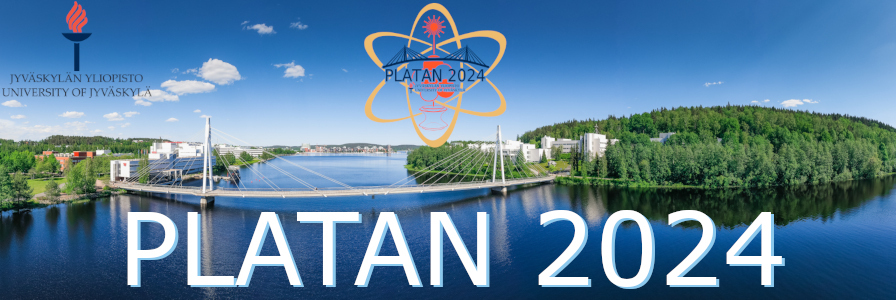Speaker
Description
High precision atomic mass spectrometry of neutron-rich rare-earth nuclides near A$\sim$165 was performed recently with the JYFLTRAP double Penning trap [1] using the phase-imaging ion cyclotron resonance technique [2] at the IGISOL facility in the JYFL Accelerator Laboratory. Altogether eighteen masses accross the lanthanum, terbium, dysprosium and holmium isotopic chains were measured, including the very first direct mass measurements of $^{152\text{,}153}$La, $^{169}$Tb and $^{170\text{,}171}$Dy. We continued the previous successful measurement campaigns at JYFLTRAP in this region [3,4] and now reached up to the N=104 neutron midshell, important for studying how the nuclear structure evolves further from stability. The properties of these nuclides also impact the models describing the formation of the rare-earth abundance peak around A$\sim$165 in the astrophysical rapid neutron capture (r) process [5], which has produced around half of the heavy-element abundances in the Solar System and takes place at least in neutron-star mergers. As variations in nuclear masses affect all the relevant nuclear properties of neighboring nuclei that depend on the mass, reducing their related uncertainties give better constraints on the calculated astrophysical reaction rates. The results are thus critical inputs for modelling the stellar nucleosynthesis and for understanding origins of different chemical elements and their abundances in the Solar System.
[1] T. Eronen et al., The European Physical Journal A 48 (2012) 46
[2] D. A. Nesterenko et al., The European Physical Journal A 54 (2018) 154
[3] M. Vilen et al., Physical Review Letters 120, 262701 (2018)
[4] M. Vilen et al., Physical Review C 101, 034312 (2020)
[5] M. Mumpower et al. Physical Review C 85, 045801 (2012)

